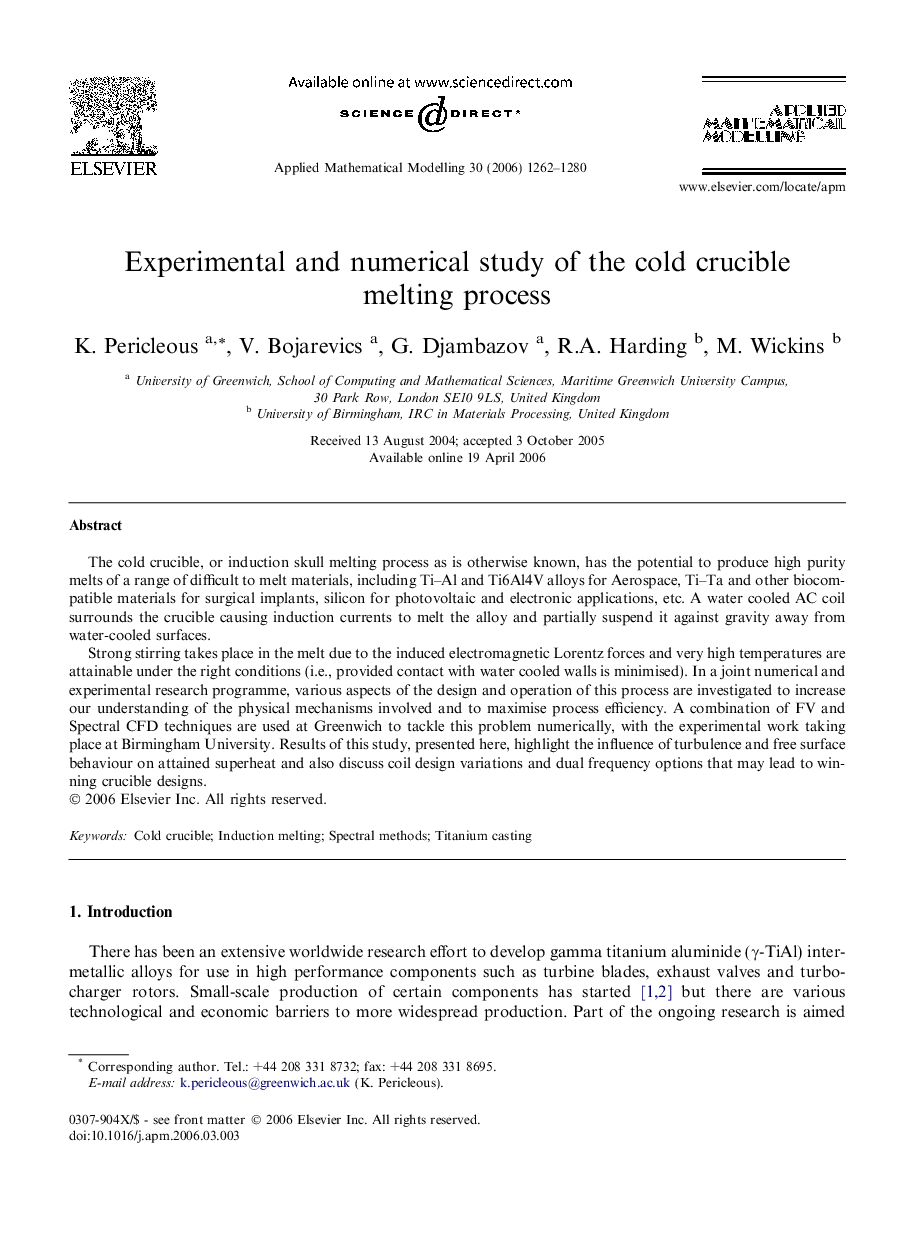| کد مقاله | کد نشریه | سال انتشار | مقاله انگلیسی | نسخه تمام متن |
|---|---|---|---|---|
| 1707313 | 1012543 | 2006 | 19 صفحه PDF | دانلود رایگان |

The cold crucible, or induction skull melting process as is otherwise known, has the potential to produce high purity melts of a range of difficult to melt materials, including Ti–Al and Ti6Al4V alloys for Aerospace, Ti–Ta and other biocompatible materials for surgical implants, silicon for photovoltaic and electronic applications, etc. A water cooled AC coil surrounds the crucible causing induction currents to melt the alloy and partially suspend it against gravity away from water-cooled surfaces.Strong stirring takes place in the melt due to the induced electromagnetic Lorentz forces and very high temperatures are attainable under the right conditions (i.e., provided contact with water cooled walls is minimised). In a joint numerical and experimental research programme, various aspects of the design and operation of this process are investigated to increase our understanding of the physical mechanisms involved and to maximise process efficiency. A combination of FV and Spectral CFD techniques are used at Greenwich to tackle this problem numerically, with the experimental work taking place at Birmingham University. Results of this study, presented here, highlight the influence of turbulence and free surface behaviour on attained superheat and also discuss coil design variations and dual frequency options that may lead to winning crucible designs.
Journal: Applied Mathematical Modelling - Volume 30, Issue 11, November 2006, Pages 1262–1280